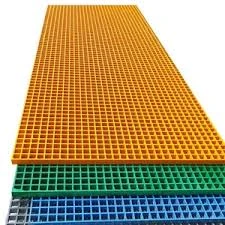
-
 Afrikaans
Afrikaans -
 Albanian
Albanian -
 Amharic
Amharic -
 Arabic
Arabic -
 Armenian
Armenian -
 Azerbaijani
Azerbaijani -
 Basque
Basque -
 Belarusian
Belarusian -
 Bengali
Bengali -
 Bosnian
Bosnian -
 Bulgarian
Bulgarian -
 Catalan
Catalan -
 Cebuano
Cebuano -
 China
China -
 China (Taiwan)
China (Taiwan) -
 Corsican
Corsican -
 Croatian
Croatian -
 Czech
Czech -
 Danish
Danish -
 Dutch
Dutch -
 English
English -
 Esperanto
Esperanto -
 Estonian
Estonian -
 Finnish
Finnish -
 French
French -
 Frisian
Frisian -
 Galician
Galician -
 Georgian
Georgian -
 German
German -
 Greek
Greek -
 Gujarati
Gujarati -
 Haitian Creole
Haitian Creole -
 hausa
hausa -
 hawaiian
hawaiian -
 Hebrew
Hebrew -
 Hindi
Hindi -
 Miao
Miao -
 Hungarian
Hungarian -
 Icelandic
Icelandic -
 igbo
igbo -
 Indonesian
Indonesian -
 irish
irish -
 Italian
Italian -
 Japanese
Japanese -
 Javanese
Javanese -
 Kannada
Kannada -
 kazakh
kazakh -
 Khmer
Khmer -
 Rwandese
Rwandese -
 Korean
Korean -
 Kurdish
Kurdish -
 Kyrgyz
Kyrgyz -
 Lao
Lao -
 Latin
Latin -
 Latvian
Latvian -
 Lithuanian
Lithuanian -
 Luxembourgish
Luxembourgish -
 Macedonian
Macedonian -
 Malgashi
Malgashi -
 Malay
Malay -
 Malayalam
Malayalam -
 Maltese
Maltese -
 Maori
Maori -
 Marathi
Marathi -
 Mongolian
Mongolian -
 Myanmar
Myanmar -
 Nepali
Nepali -
 Norwegian
Norwegian -
 Norwegian
Norwegian -
 Occitan
Occitan -
 Pashto
Pashto -
 Persian
Persian -
 Polish
Polish -
 Portuguese
Portuguese -
 Punjabi
Punjabi -
 Romanian
Romanian -
 Russian
Russian -
 Samoan
Samoan -
 Scottish Gaelic
Scottish Gaelic -
 Serbian
Serbian -
 Sesotho
Sesotho -
 Shona
Shona -
 Sindhi
Sindhi -
 Sinhala
Sinhala -
 Slovak
Slovak -
 Slovenian
Slovenian -
 Somali
Somali -
 Spanish
Spanish -
 Sundanese
Sundanese -
 Swahili
Swahili -
 Swedish
Swedish -
 Tagalog
Tagalog -
 Tajik
Tajik -
 Tamil
Tamil -
 Tatar
Tatar -
 Telugu
Telugu -
 Thai
Thai -
 Turkish
Turkish -
 Turkmen
Turkmen -
 Ukrainian
Ukrainian -
 Urdu
Urdu -
 Uighur
Uighur -
 Uzbek
Uzbek -
 Vietnamese
Vietnamese -
 Welsh
Welsh -
 Bantu
Bantu -
 Yiddish
Yiddish -
 Yoruba
Yoruba -
 Zulu
Zulu
roof tank fiberglass
Exploring Fiberglass Roof Tanks A Sustainable Solution for Water Storage
In the modern era where sustainability and efficient resource management are paramount, fiberglass roof tanks have emerged as a popular solution for water storage. These tanks, primarily constructed from fiberglass-reinforced plastic, offer a myriad of advantages in various applications, including residential, commercial, and industrial settings.
Durability and Longevity
One of the most appealing qualities of fiberglass roof tanks is their exceptional durability. Unlike traditional materials such as steel or concrete, fiberglass does not corrode or degrade when exposed to water, chemicals, or harsh weather conditions. This resilience means that fiberglass tanks can last considerably longer, often exceeding 30 years of service life with minimal maintenance. This longevity not only provides cost savings over time but also reduces the environmental footprint associated with manufacturing and disposing of tanks.
Lightweight and Easy to Install
Fiberglass is significantly lighter than alternative materials, making transportation and installation much more straightforward. The lightweight nature of these tanks allows for easier handling and often requires less structural support from the building or roof. This quality can be crucial in situations where building codes or load-bearing restrictions come into play. Additionally, many manufacturers offer pre-fabricated tanks, which can be delivered and installed swiftly, minimizing downtime and disruption.
Corrosion Resistance
Water storage systems are notoriously susceptible to corrosion, especially in regions with high humidity or salt exposure. Fiberglass roof tanks are designed to resist such issues, maintaining their integrity over time. The non-corrosive properties extend the lifespan of the tank and ensure that the water inside remains uncontaminated. This feature is especially vital in applications like agricultural water storage or potable water supplies, where water quality is paramount.
Thermal Insulation
roof tank fiberglass

Another significant advantage of fiberglass tanks is their natural insulating properties. These tanks can help maintain the temperature of the stored water, reducing the risk of freezing in colder climates and minimizing temperature fluctuations. This stability can be particularly beneficial in various agricultural applications, where temperature control is vital for managing resources effectively.
Environmental Impact and Sustainability
As society becomes increasingly concerned with environmental sustainability, fiberglass roof tanks stand out as an eco-friendly option. They are often made from recycled materials and can be recycled at the end of their lifespan, further contributing to a circular economy. Moreover, by capturing and storing rainwater or recycled water, these tanks promote conservation efforts and reduce reliance on municipal water supplies.
Cost-Effectiveness
While the initial upfront cost of fiberglass roof tanks may be higher than other materials, the long-term financial benefits are substantial. The durability and low maintenance requirements lead to lower operational costs over time. Furthermore, the efficiency and ease of installation can translate to reduced labor costs, making fiberglass tanks a cost-effective choice for many projects.
Versatility in Design
Fiberglass roof tanks are available in a variety of sizes and shapes, adaptable to the specific needs of a project. Whether for large-scale agricultural use, industrial applications, or residential water storage, these tanks can be customized to fit the intended purpose while maximizing available space.
Conclusion
In conclusion, fiberglass roof tanks present an excellent solution for efficient and sustainable water storage. With their durability, lightweight design, corrosion resistance, and thermal insulation properties, they provide a reliable and eco-friendly option for various applications. As the world continues to seek innovative solutions to meet growing water demands, fiberglass roof tanks stand out as a forward-thinking choice that aligns with environmental conservation efforts. Embracing this technology not only benefits the individual user but also contributes to a more sustainable future.
Latest news
-
Exploring the Benefits of Top Hammer Drifter Rods for Enhanced Drilling PerformanceNewsJun.10,2025
-
High-Precision Fiberglass Winding Machine for GRP/FRP Pipe Production – Reliable & Efficient SolutionsNewsJun.10,2025
-
FRP Pipes & Fittings for Shipbuilding - Corrosion-Resistant & LightweightNewsJun.09,2025
-
Premium FRP Flooring Solutions Durable & Slip-ResistantNewsJun.09,2025
-
Premium Fiberglass Rectangular Tanks Durable & Lightweight SolutionNewsJun.09,2025
-
Tapered Drill String Design Guide Durable Performance & UsesNewsJun.09,2025









